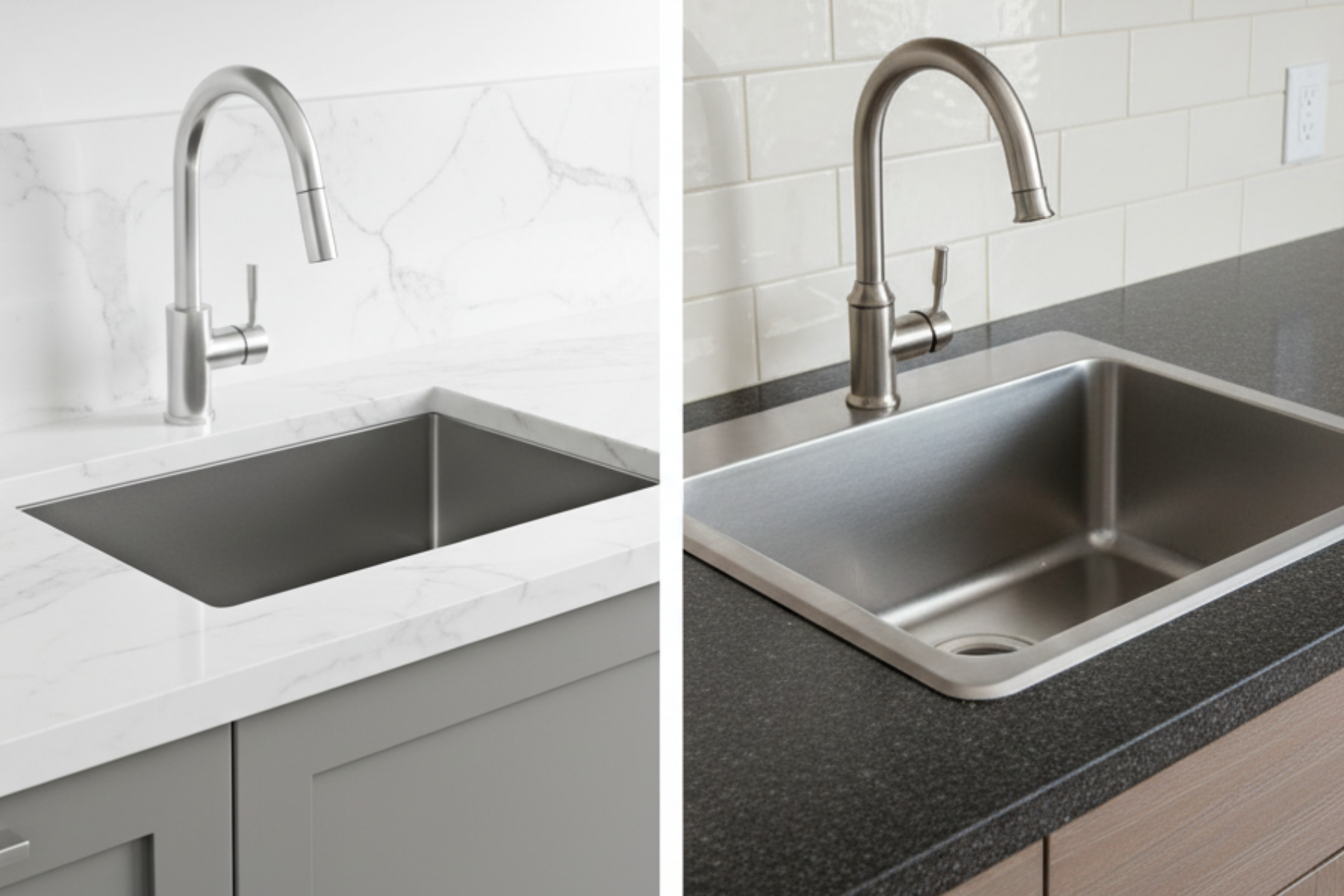Apron Front Sinks: Installation Tips for a Seamless Look
The beauty of an apron front sink lies in its integration with the cabinetry—it looks custom-built, not just placed. To achieve this seamless, high-end appearance, you must focus on three areas of precision: the cut, the support, and the seal.
Tip 1: Precise Cabinet Cut-Out (Measure Thrice, Cut Once!)
The gap between the sink apron and the cabinet face determines the final look.
- Small Gap is Key: Aim for a 1/8 inch gap on all sides. This minimal clearance is just enough to allow you to set the sink and later fill with caulk, creating a shadow line instead of a noticeable gap.
- Use the Sink as the Template: Do not trust paper templates for the apron. Once the internal support frame is built, physically hold the sink in its final position and mark the exact cut line on the cabinet face.
- Cut in Stages: Use a jigsaw to cut slightly inside your line, then use a rasp or sander to slowly shave the opening to the perfect dimension.
Tip 2: The Perfect Rim Alignment
The top of the sink rim must align flawlessly with the countertop.
- The Support Platform: The best method is to build a robust plywood platform inside the cabinet to support the sink from below. This platform must be perfectly level.
- Setting the Height: The general rule is to set the sink rim either 1/16 inch below the countertop (for a sleek, slightly recessed look) or perfectly flush. Never let the sink rim sit above the countertop. Shims (metal or plastic) can be used between the support platform and the sink bottom to achieve this micro-adjustment.
- Wait for the Counter: If you are installing new countertops, install the sink first, then have the fabricator measure and cut the counter pieces to fit the installed sink exactly.
Tip 3: Flawless Sealing (The Invisible Caulk Line)
The final caulk job dictates the seamless finish.
- Tape Off: Use painter's tape to mark off the exact area you want the caulk to cover. Place one line of tape on the sink apron and a parallel line on the cabinet face, leaving a perfect, consistent gap (e.g., 1/4 inch). Do the same where the sink meets the counter.
- Use Quality Silicone: Use only 100% pure white or clear silicone sealant.
- Tooling: Apply the caulk, then use a caulk tool or a dampened fingertip to smooth the bead. Immediately remove the painter's tape before the caulk skins over. This leaves a crisp, professional, and seamless caulk line.

%204.svg)
%204.svg)
%204.svg)
%204.svg)
%204.svg)
